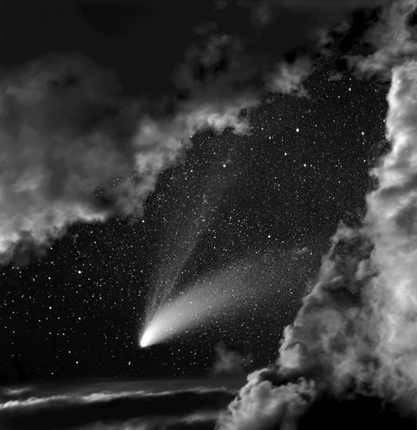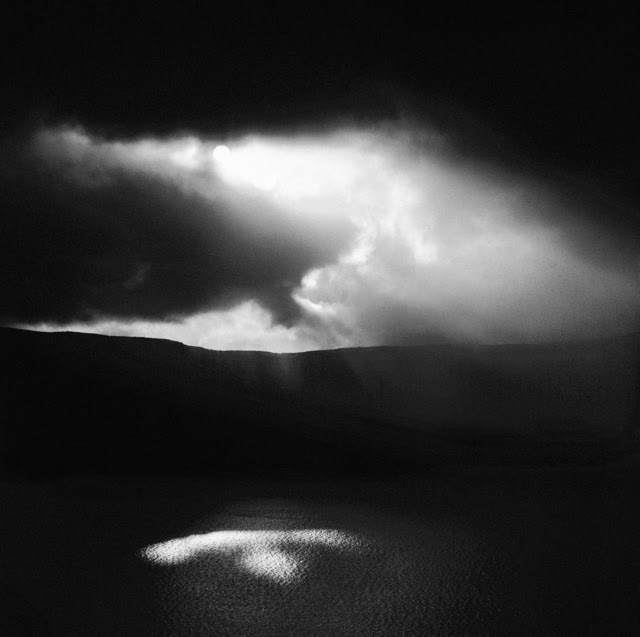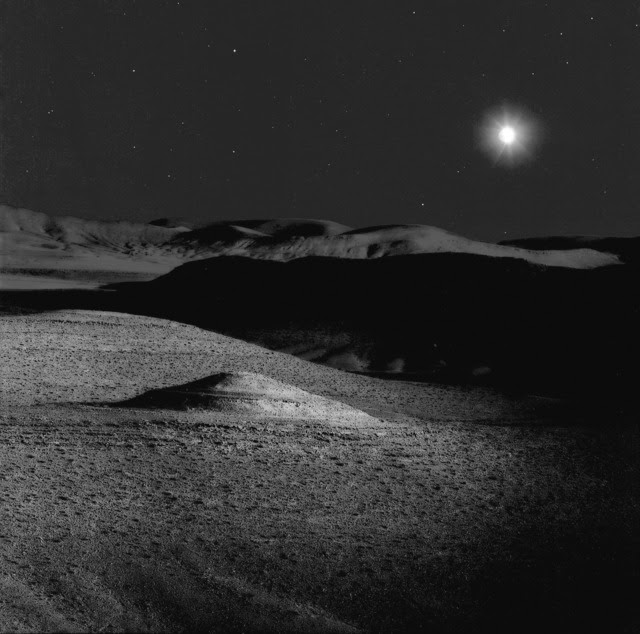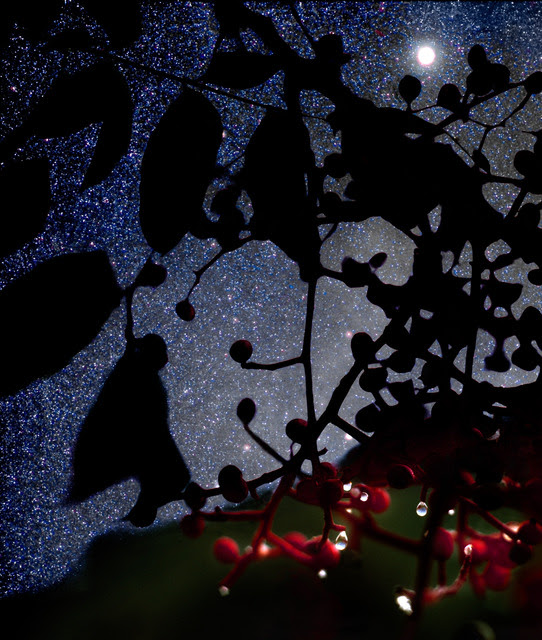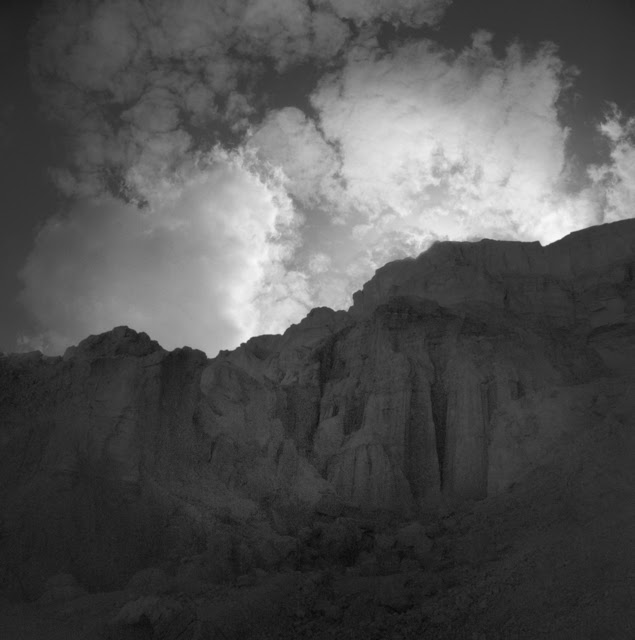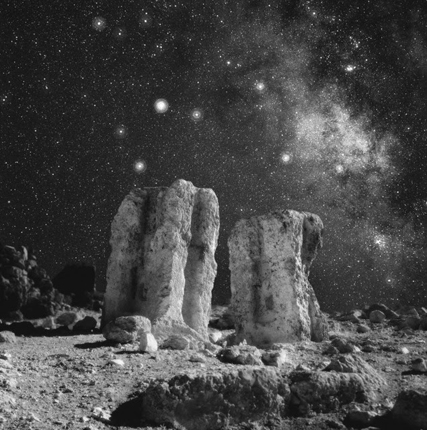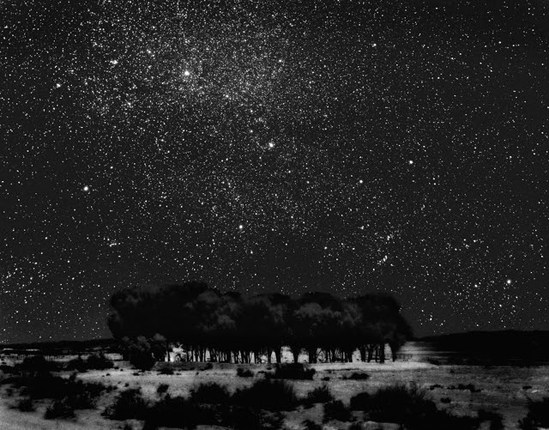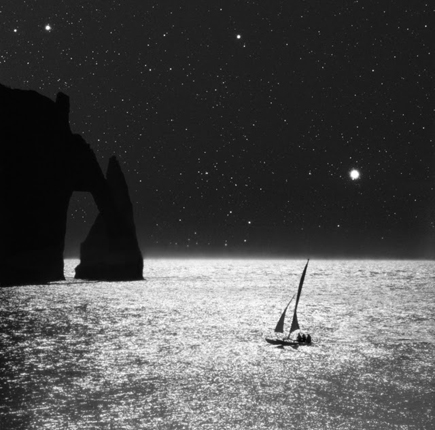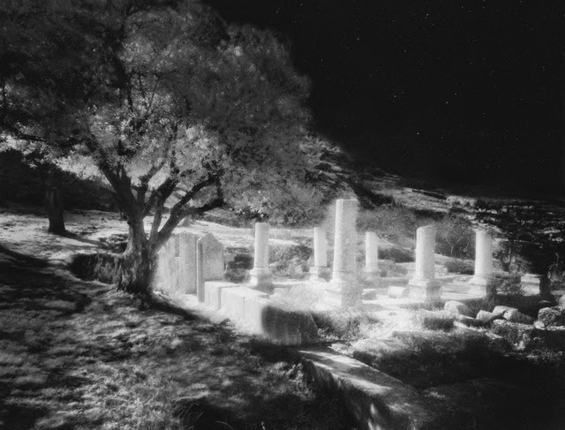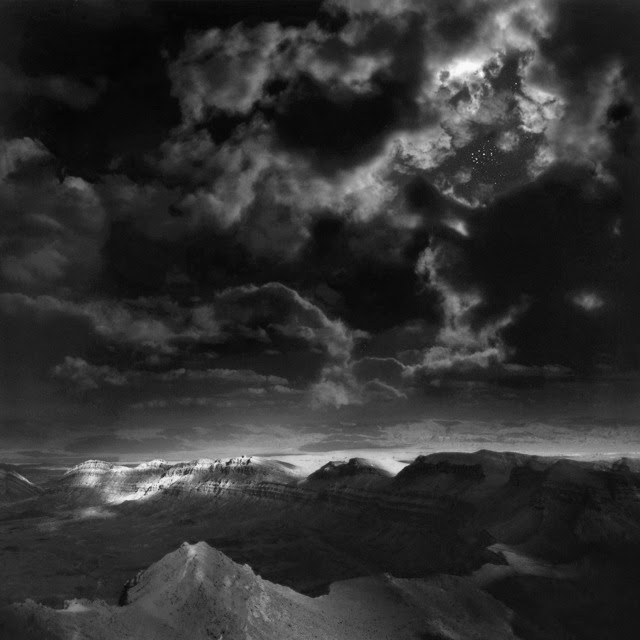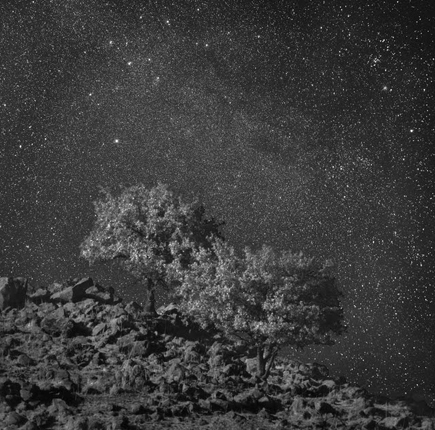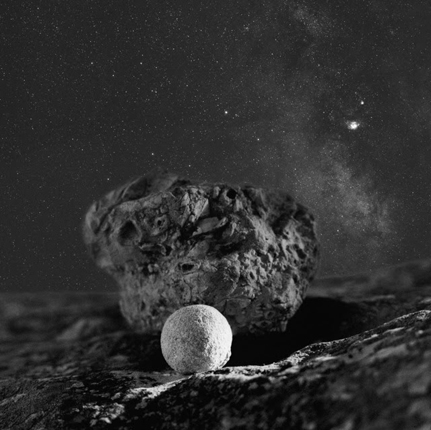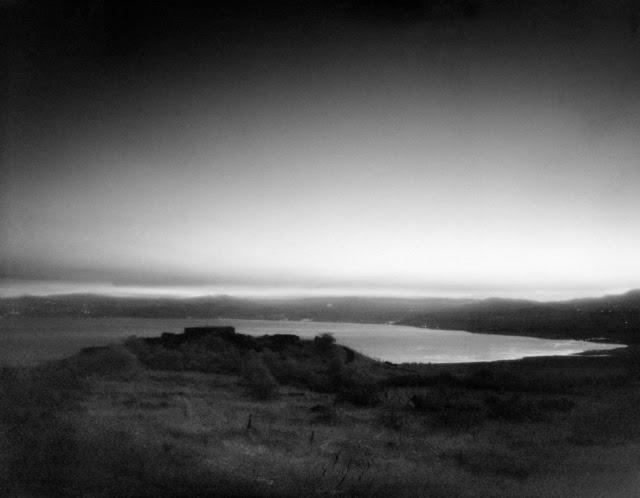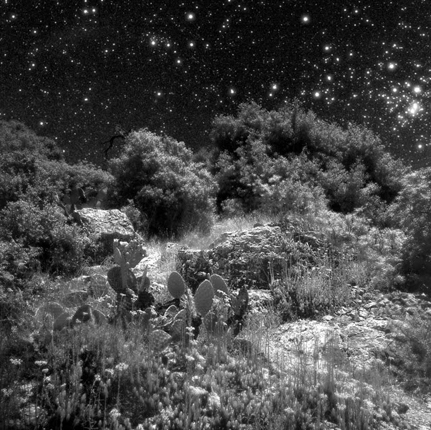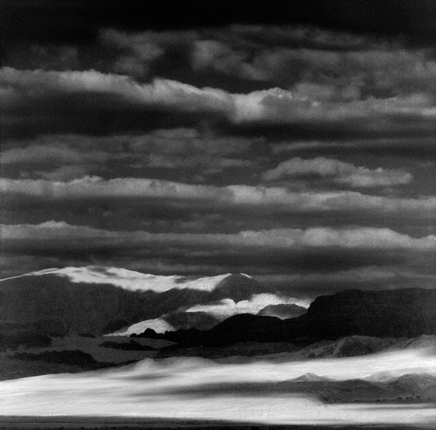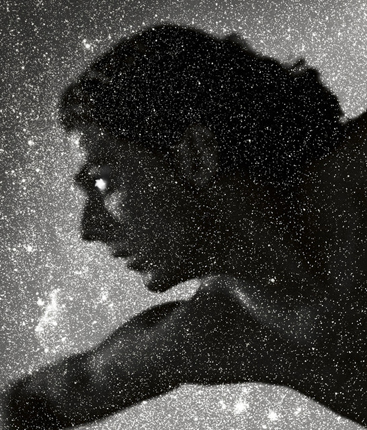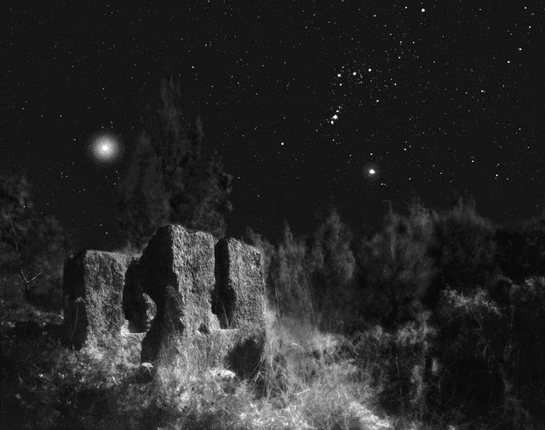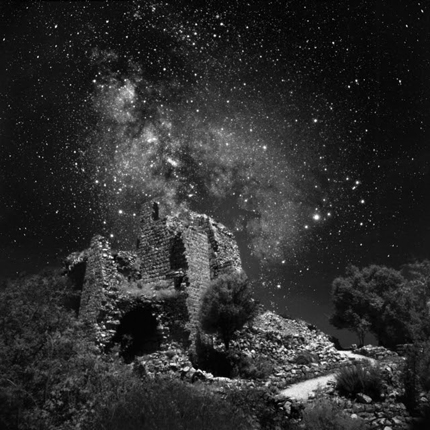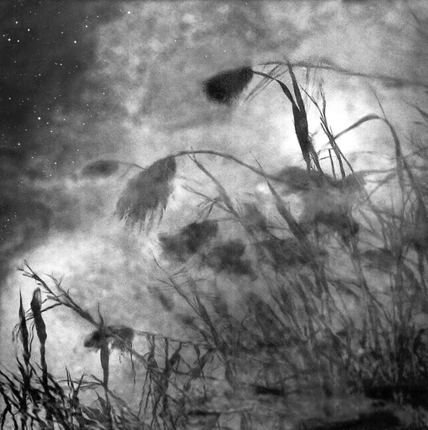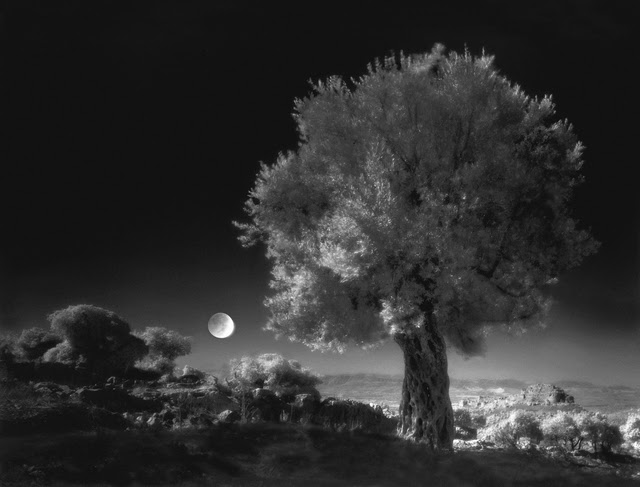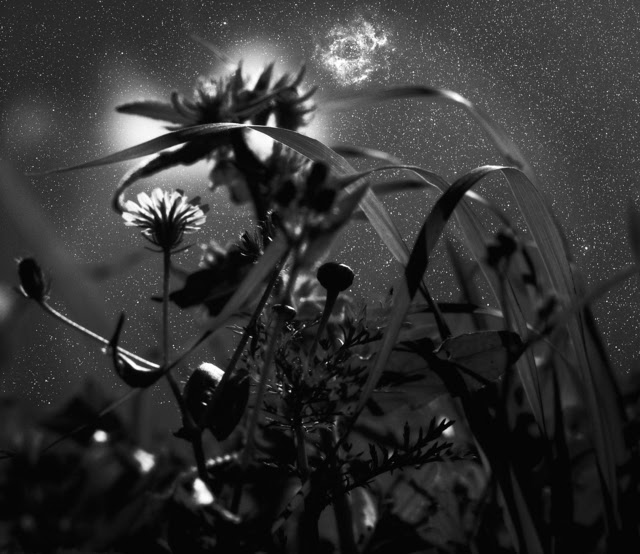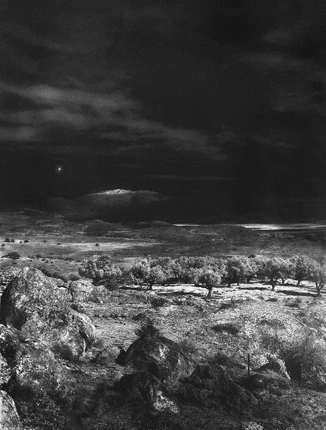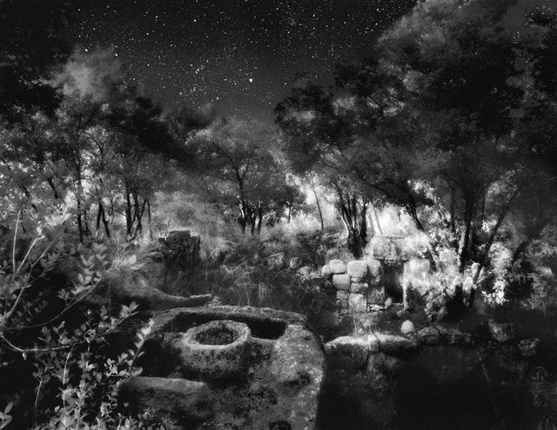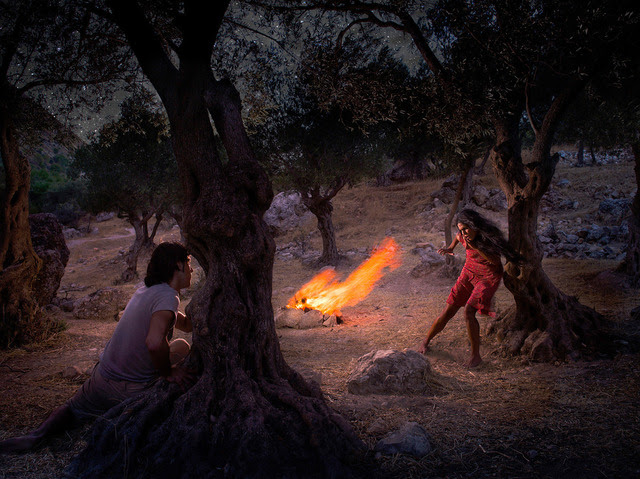The horizon line separates the world we know from the unknown and the unknowable beyond. A dark night, however, may conceal the horizon, so that heaven is no longer so easily distinguished from earth. Only the glowing stars outline our small world. It is chilling to imagine the view of the heavens from the far side of the moon, without that familiar horizon.
I have spent entire nights gazing at the view through my small telescope, trying to understand the meaning of so many stars and galaxies, enchanted by the beauty and seeming order of what I see. I use what knowledge I have of these distant celestial bodies to inform my sight, but imagination is always the better part of the view. I look at a “place” – or is it a time? – twenty-five to thirty million light years away, at the spiral galaxy known as the Whirlpool Galaxy, and I see the light of an object so far in the past that I have no certainty it is still there. I think I see the spiral arms of two galaxies tugging at one another – but it is such an effort to see that it is hard to say how much of my view is sight and how much imagination. And the Whirlpool Galaxy is one of the brighter, larger objects available to my telescope. Perhaps this is the metaphor of these photographs: the horizon between knowledge and imagination, between the present and eternity, between substance and spirit, certainty and doubt. No one can draw that line with precision, for we exist in all of these worlds at once.
Thus I am drawn to landscapes and ruins in my ancient and hallowed land, lit by the soft, antique light of stars that glow in the past and illuminate the present. These visions were inspired by the hundreds of nights I spent under the dome of the stars in the Sinai desert, sometimes walking by starlight along the dry riverbeds. The nights are dark and nearly monochromatic, but despite the murkiness, one can see well enough to walk among the mysterious, starlit landscapes.
Abraham was promised that his descendants would be as the dust of the earth and the stars above. Our spirit, like sand, is nearly indestructible, while our eyes are drawn to the stars. Like Abraham’s, our feet are planted in the sand, but our vision and imagination can encompass the universe – and sometimes more. I am drawn towards the horizon and to the stars we meet at the human edge of the cosmos.
Neil Folberg
Jerusalem, 2001
Neil Folberg’s Celestial Nights is now showing at the Dryansky Gallery in San Francisco, through January 17, 2016

